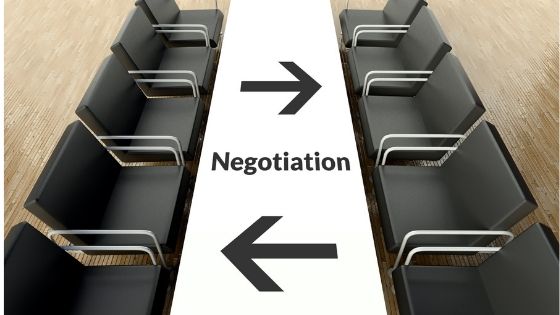Negotiation is one of the most important soft skills in the workplace today. Often it is the negotiation tactics hat are used that make the biggest difference. In this article we will explore five effective negotiation tactics.
In the 2019 CIPS Procurement Salary Guide, negotiation was recognised as a key skill from the professional through to tactical level.
But there’s a common misconception that negotiation is all about playing hardball or aiming to win. Whereas, in fact, successful negotiation is about creating opportunities to influence and achieve outcomes that both sides are satisfied with.
In other words, you need to aim for a win-win result.
So how do you do it?
Here are five of the most effective negotiation tactics you should know:
1) Read the room.
Negotiation is often about what is not being said. So, your success will depend on your ability to ‘read’ the other person. What are they thinking? What are their goals? What does their body language tell you about their strategy?
Look for the subtle gestures and expressions that tell you what the other person is thinking and whether things are going well. For example, if they lean in towards the conversation, you can assume they are moving towards agreement or engagement. While leaning back can indicate that things are going off track.
A skilled negotiator may have good control of their body language, but micro expressions won’t lie. Learn how to interpret these tiny facial movements and you will have a powerful position.
2) Don’t make the first offer
This is related to the psychological theory called “anchoring”. If you make first offer, you’ve dropped an anchor on the table. Any offers from that point will be compared to the first offer.
But if you allow the supplier to make the first offer, you know where they’re at and can negotiate from there.
3) Use silence and time
Silence and time are incredibly powerful negotiation tools. If you’re not working to a deadline, use time to your advantage and get a better deal. The importance of when you say something can make all the difference when negotiating.
Where it gets really interesting is with silence. Australian and western cultures don’t tend to like silence. When someone stops speaking, the other party feels uncomfortable and talks to fill the gap. It’s how we’ve been conditioned.
4) Escalate the issue
Before you go into the negotiation, understand what you can agree to and at what point you need to get further approval. Getting a senior manager involved in the negotiation might feel like defeat, but you can put yourself in a stronger position.
5) Be willing to walk away
With any negotiation it’s crucial to have a strategy. Approach the negotiation knowing what you want to achieve and what your ‘walk away’ point will be.
If you’re not prepared to walk away, you can come across as needy. Start out with the intent that if the deal’s not good, you will walk away. If not, they can negotiate you into a corner.
Over to you
Whether negotiating with suppliers or engaging with stakeholders, procurement professionals are faced with the need to persuade and influence people on a regular basis. Knowing how to work the situation to your advantage is an extremely valuable skill.
Want to sharpen these skills? Enrol for our short course in negotiation skills.






